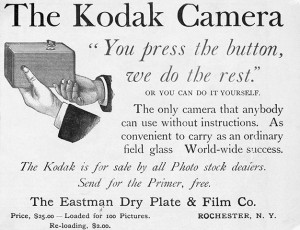Paul Virilio’s third and final part of his book Open Sky is profound. It is here where he ties his whole theory of technological takeover together.
Virilio discusses how we are becoming very detached from the actual image of what is actually happening. We are so consumed with the analysis provided of what we are seeing that we get lost when we look at it through our own eyes. He claims that we see more now, but are in reality, seeing less.
How is this possible? We have access to so much more information, whether it be photographs or videos that we access through television or the web, we are constantly exposed to images that are synthesized through another’s perspectives. This is what is considered a perceptual disorder, we are using technology to augment our own vision.
Aside from allowing others to dictate what we see, we are unable to see images for ourselves. Seeing through the same lens as the rest of the world is causing us to lose our sense of self. Not only are we as an individual being forced to look at images and video through someone else’s perspective is damaging to society as a whole. This contributes just as global time does to promote the “global state.”
Global state is created when someone in Florida sees the same images as someone in China. However, the perspectives by which they are discussed or presented can be very different. This is one of the ways that we fight the imposition of the global state.
We have less of a chance to synthesize what is coming into our state of knowing and it causes us to sometimes accept things that are not real. For instance, the overwhelming presence of the Boston Marathon Bombing on televisions lately forced us to accept facts that were not necessarily true. This was exhibited in the early (and false) reporting of the bomber’s arrest.





















